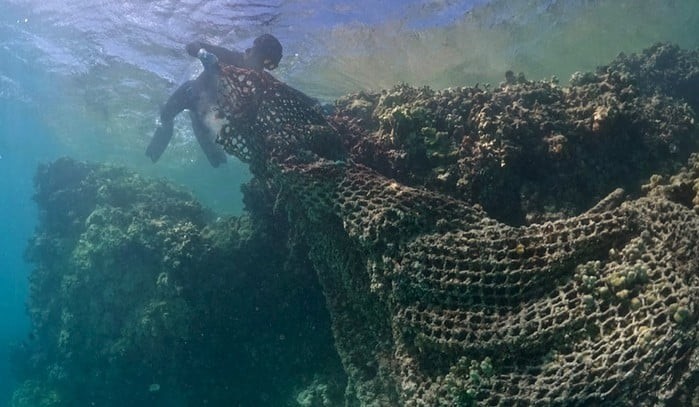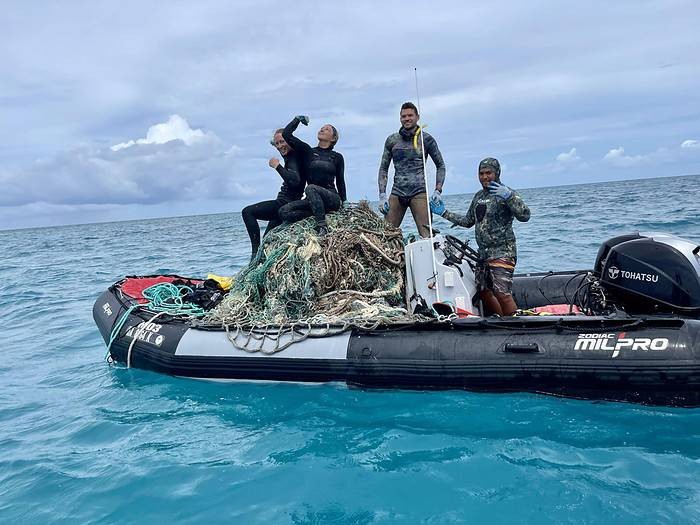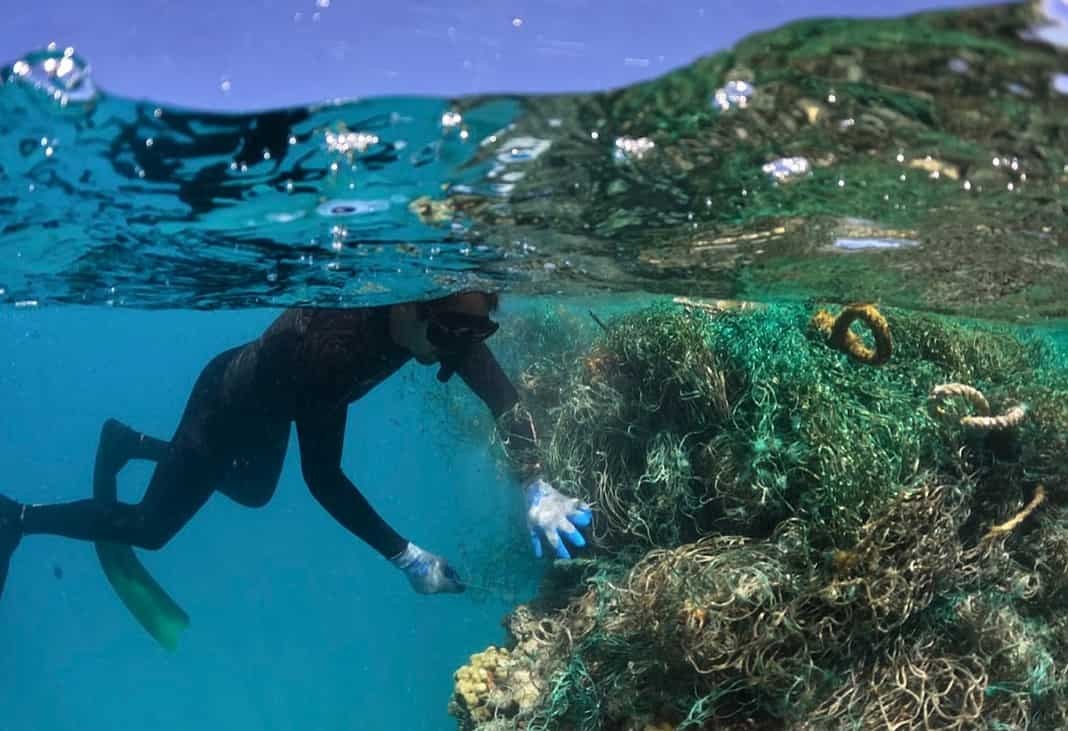A group of freedivers recently removed a total of 97,295 pounds (44,132kg) of marine debris from reefs and beaches of the Papahanaumokuakea Marine National Monument off the Northwestern Hawaiian Islands.
Of that amount, 86,000 pounds (39,009kg) consisted of ghost nets cleaned from a single reef, according to the Papahanaumokuakea Marine Debris Project (PMDP), a Hawaii-based non-profit organization.
The reef, known as Kamokuokamohoali’i (“island of the shark god”) or Maro Reef, lies in the heart of the Papahanaumokuakea Marine National Monument, a string of remote and uninhabited islands that make up the last 1,300 miles/2,092km of the Hawaiian island chain.

Ghost nets, which are large tangled masses of lost or discarded fishing nets made of plastic, routinely snag on the shallow coral reefs of the Hawaiian islands, smothering and breaking the living coral colonies. One single trawl net the team discovered at Kamokuokamohoali’i was found plastered across nearly 200 feet/61m of reef by the ocean currents and had smothered much of the living coral underneath it. These nets also pose a major entanglement hazard for most marine wildlife, most notably the endangered Hawaiian monk seal, of which only 1,500 remain. Hawaiian green sea turtles (honu) and many species of seabirds are also vulnerable to this threat.
The team of 16 freedivers from PMDP set off from Honolulu on July 2 on a 27-day cleanup expedition to Papahanaumokuakea Marine National Monument. Over 12 intensive days of work at Kamokuokamohoali’i, the team surveyed 1,100 acres/445 hectares of coral reef and successfully removed 86,000 pounds of ghost nets from that area.
According to PMDP President Kevin O’Brien:
“That’s the equivalent of taking a walk through New York’s Central Park and a few surrounding blocks, and finding enough trash there to equal the weight of a commercial commuter airliner. The fact that we are seeing this kind of accumulation in such a single small area is really indicative of the scale of the global marine debris issue. Kamokuokamohoali’i is one of the most pristine and isolated places on the planet, and if it’s ending up here in these quantities, it means we’ve got a problem.”
Teams of divers surveyed for nets by swimming search patterns over the reef. When a net was found tangled in the coral, the divers carefully cut the net free from the reef to avoid further damage, and hauled them by hand into Zodiac inflatable boats launched from the mothership. Nets range in size, but can routinely weigh upwards of 2,000 pounds/907kg each. All removal work was completed using breath-hold diving techniques to keep the team quick and nimble.

PMDP Executive Director James Morioka said:
“An estimated 115,000 lbs of marine debris accumulates on the reefs of Papahanaumokuakea each year, and if PMDP isn?t cleaning it up, no one is. PMDP’s next clean-up mission is in September, with the goal of removing another 100,000 lbs. It?s our goal at PMDP to continue regular clean-up efforts into the future to maintain coral reef health and protect countless animals from entanglement and potential injury or death.”
In addition to what was collected from Kamokuokamohoali’i, the PMDP expedition also cleaned up an additional 11,000 pounds/4,990kg of nets and plastics from the shorelines of two other island locations: Kamole (Laysan Island) and Kapou (Lisianski Island).
PMDP Team Lead Namele Naipo-Arsiga said:
“I’ve fallen in love with Papahanaumokuakea. There is no other place like it. And it’s quite simple, when you love a place and it has woven itself into your heart, your body lunges to the work calling to be done.”
Thanks to the “Nets to Energy” partnership with Schnitzer Steel Corporation and Covanta Energy, a majority of the debris will be incinerated and turned into energy for powering hundreds of Oahu homes. However, before incineration, recyclable plastics will be set aside for PMDP’s local student-led ocean plastics recycling project.

